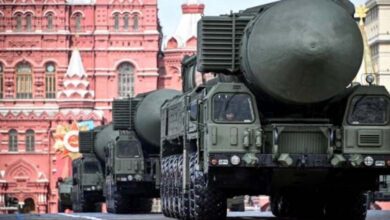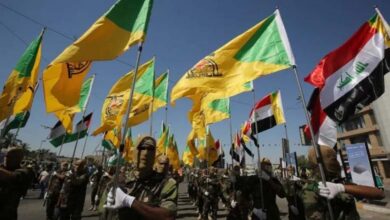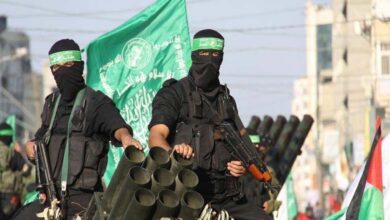Maher Al-Assad Abandons Hezbollah to Avoid Israeli Strikes
The leadership of the Fourth Division ordered that no weapons be transported or members of the Lebanese Hezbollah and Iranian militias hosted within the headquarters and bases of the Fourth Division.

The Syrian Observatory for Human Rights revealed a series of precautionary measures taken by the Fourth Division, led by Maher Al-Assad, the brother of President Bashar Al-Assad, in an attempt to avoid repeated Israeli strikes, at the expense of its regional allies.
-
Hezbollah Prepares for War of Attrition with New Leadership to Lead the Battle
-
One of them was a missile system commander… Israel kills Hezbollah leaders
According to sources from the Observatory, the division’s leadership ordered that no weapons be transferred or members of Lebanese Hezbollah and Iranian militias hosted in the headquarters and bases of the Fourth Division. It also prohibited its forces deployed in Syrian areas from targeting the American or Israeli presence in the Golan.
The Fourth Division is concentrated in the governorates of Damascus and Rural Damascus, and it also has forces in Idlib, with points of presence in Deir ez-Zor province.
-
Hezbollah Foils Israeli Ground Incursion Attempts
-
Disengagement from Gaza: Did Hezbollah accept in private what it publicly rejected?
It is noteworthy that Israel targeted a villa of the Fourth Division near the town of Yafour in Rural Damascus on September 29, with sources suggesting that the strike was due to information about the presence of Hezbollah leaders at the site.
For months, Hezbollah members in Syria have been operating discreetly, avoiding spending the night in party headquarters; according to local sources in Homs, some members of local militias and officials in local security agencies have amassed considerable wealth from their ties to Hezbollah, but ongoing Israeli targeting has disrupted that connection.
-
Targeted by Hezbollah: What Do We Know About the Israeli Galilout Base?
-
Hezbollah and Revolutionary Guard Experts under Houthi Suspicion: New Arrangements in Yemen
The Observatory recorded 20 strikes that resulted in the destruction and injury of 16 targets, the killing of 13 military personnel, and the injury of 10 others with varying degrees of severity. These strikes have been particularly concentrated in the border areas between Syria and Lebanon, especially at legal and illegal crossings, under the pretext of using those crossings to transfer weapons and military equipment to Lebanese Hezbollah, making them a continuous target for Israeli strikes.
Since the beginning of the escalation in Lebanon, military movements of Israeli forces have been observed near the border between Quneitra province and the Syrian Golan, characterized by the deployment of a large number of Israeli tanks and military vehicles on the Golan Heights, posing a clear threat to forces on Syrian territory.
-
Hezbollah Engages in Violent Clashes with Israeli Army near Border
-
The Sole Survivor of Hezbollah’s Leadership: Who Is Abou Ali Reza?
In recent months, Israel has begun opening corridors in the Syrian Golan and detonating minefields along the ceasefire line several times, in parallel with the escalation of strikes.
Media and social media have been buzzing with news of the incursion of Israeli occupation forces into Syrian territory, amid rising tensions in the region and fears of Israel expanding its aggression to include Syria after Lebanon and the Gaza Strip.
-
A $7 Million Bounty on Its Leader: What Is Hezbollah’s Most Dangerous Unit, “The Shadow Unit”?
-
Gaza Setback and the Success of Israeli Spies: An Analysis of Hezbollah Infiltration
Field sources confirmed that a unit of the Israeli army, supported by vehicles and armored elements equipped with machine guns, entered Syrian territory near the town of Kudenah in southern Quneitra, coming from the side of Tell al-Ahmar to the west, and cleared agricultural land.
The site “Tajamou Ahrar Horan” reported that the clearing targeted an area of 500 meters long and one kilometer wide, noting that the incursive force included this area into the Israeli side by placing barbed wire to separate it from the Syrian side.
-
Israel Considers Ceasefire with Hezbollah While Continuing Escalation
-
Israel Urges Lebanese Citizens to Immediately Move Away from Hezbollah Sites
Since September 23, the number of Lebanese entering Syria has exceeded one hundred thousand; approximately 64,403 entered through crossings in Homs province, while 45,636 crossed from the Masnaa-Jdeideh Yabous crossing in Rural Damascus, and 8,236 entered from the Al-Areedha crossing in the coastal province of Tartous.












